With summer right around the corner, you and your family will likely be spending more time outside. A home patio serves as the headquarters of your outdoor space, the prime area to socialize, eat and relax.
If you’re interested in creating a patio from scratch or replacing your existing one, there are lots of choices to consider. I tapped my experience sourcing and setting a flagstone patio, as well as the expert insight of Paul Knapp, founder and Landscape Designer at Landscape Architectural, to assemble this list of popular options.
Poured Concrete Patio Flooring
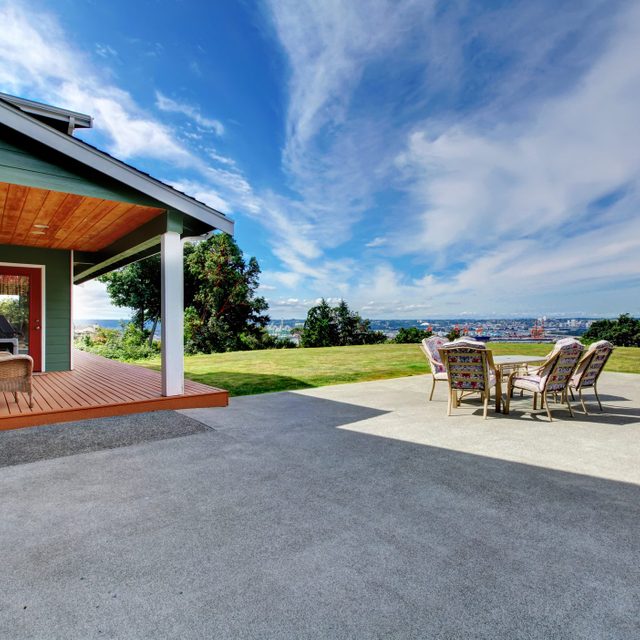
If you’re looking for a basic, no-frills option on a budget, consider a poured concrete patio. According to Knapp, “concrete is relatively cheap, and the labor to install is reasonable, too.” Installation will run about $10 to $15 per square foot.
I personally find the flat surface convenient for rolling grills around and keeping patio furniture level. However, some might find it less visually appealing than other more creative options. It’s possible to install yourself, but unless you’re comfortable with building concrete forms, leave this to professionals.
Longevity also can be an issue. “It’s not a matter of if it will crack, but when it will crack,” Knapp says. “It’s fairly durable, but over time, with weather conditions and seasonal changes, concrete can crack.”
Pros:
- Cheaper than most options;
- Flat surface ideal for rolling grills and furniture;
- Easy to maintain.
Cons:
- Not as visually appealing as other options;
- Will crack eventually;
- Not ideal for most DIYers to install.
Stamped Concrete Patio Flooring
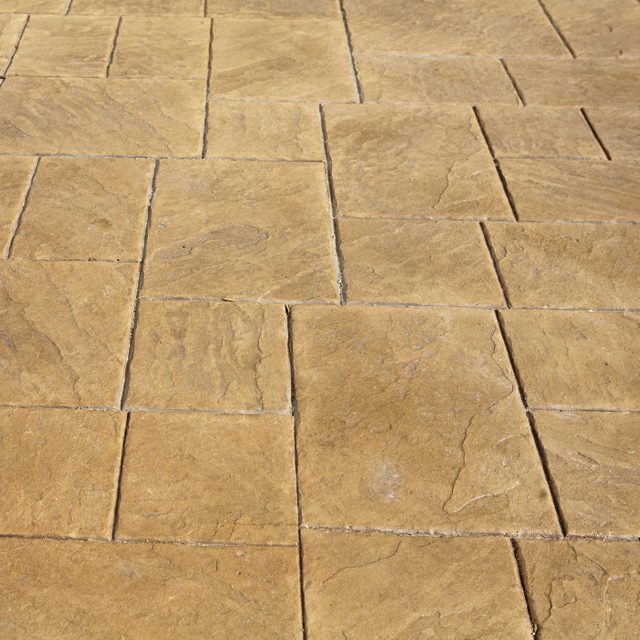
Stamped concrete patio flooring is poured flooring with a pattern “stamped” onto the wet concrete with a rubber form. It’s a relatively simple way to replicate the outline of pavers, bricks, stone or other geometrical patterns without sourcing, purchasing and placing separate components.
If you can pour concrete, you can stamp your own concrete flooring. But according to Knapp, “The installer must be careful to set the form on the desired area of concrete and then be able to lift it off without messing up the imprints.” Just like poured concrete flooring, stamped versions are also susceptible to cracking over time.
Pros:
- More visually attractive than poured concrete;
- Relatively low price;
- Wide variety of patterns to choose from.
Cons:
- Installation requires experience;
- Will crack over time.
Paver Patio Flooring
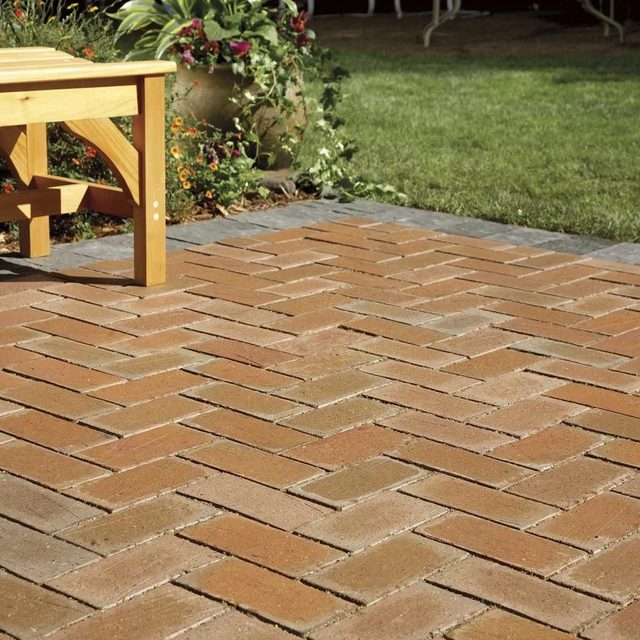
Paving stones, or simply pavers, can be made of concrete or clay. Traditionally 4- x 8-in. and 2.25 inches thick, they’re available in lots of colors and can be finished with a sealer to extend their lifespan.
Costs can vary. Clay tends to be more expensive than concrete but won’t fade in the sun, so it could be worth the extra investment. Proper installation with a solid base is especially important. Otherwise, you’ll end up with a lumpy, loose and uneven patio.
If you decide to install yourself, Knapp recommends a crushed gravel or recycled concrete base. To make it, first compact your soil with a hand or machine tamper. Then install two inches of gravel and compact again. Knapp says you should shoot for six inches of gravel base for a residential patio.
Pros:
- Available in lots of shapes and colors;
- Sealant extends their lifespan;
- Clay pavers will never fade in the sun.
Cons:
- Complex installation not ideal for first-timers
Natural Stone Patio Flooring
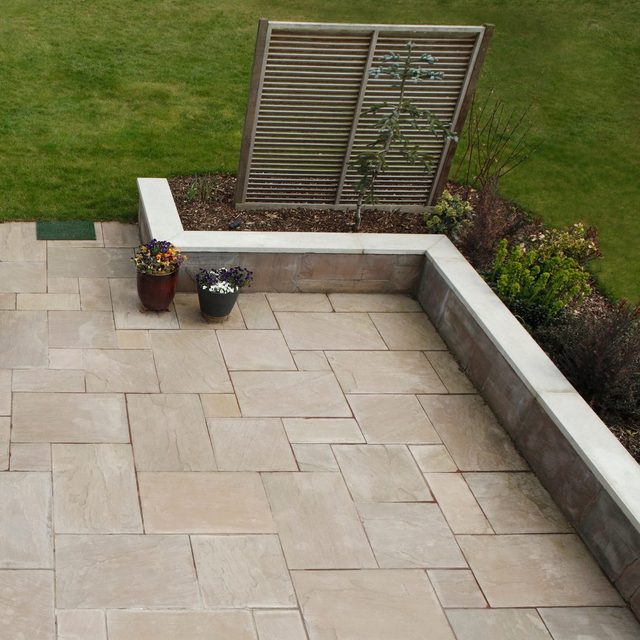
Natural stone — also called flagstone patio flooring — comes in irregular shapes and sizes, terrific for those hoping to avoid the manufactured look of concrete and pavers. Like clay pavers, natural stone won’t fade in the sunlight.
The large size of natural stone pieces, the labor-intensive quarrying process and relative scarcity of the material — it can only be sourced from certain areas of the country — make it one of the more expensive options.
Pros:
- Will never fade in sunlight;
- Attractive, natural look.
Cons:
- Expensive;
- Challenging to install correctly.
Decorative Chip Gravel Patio Flooring
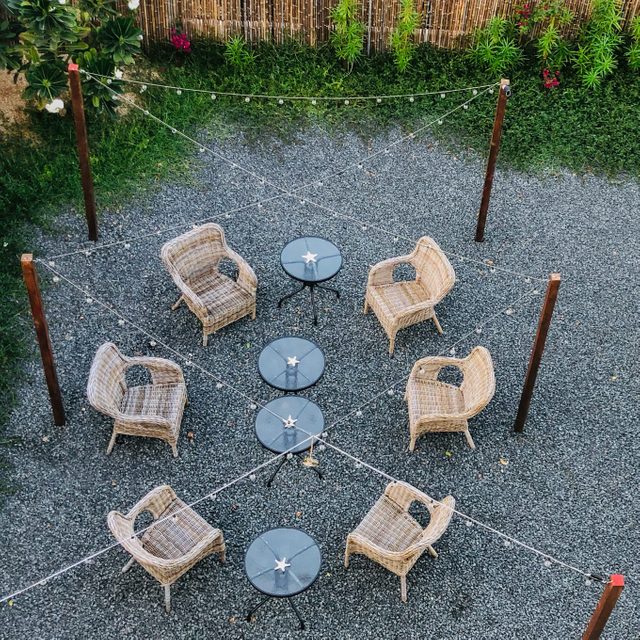
Unlike solid flooring options, gravel patios feature loose stones contained within a border of plastic or metal edging. Although this option requires compacting the ground and applying a gravel base first, then topping it with the decorative gravel of your choice, installation is less intensive than pavers or natural stone.
If you do decide to install yourself, Knapp recommends no more than one inch of decorative gravel. Otherwise, he says, you can end up with a patio that’s too loose and uncomfortable to walk on. Gravel patios also can become messy, especially if you have kids or rambunctious pets.
Pros:
- Relatively easy DIY installation;
- Affordable.
Cons:
- Can be messy;
- Not ideal for rolling wheeled grills or furniture.
Article source here: Homeowner’s Guide To Patio Flooring


No comments:
Post a Comment